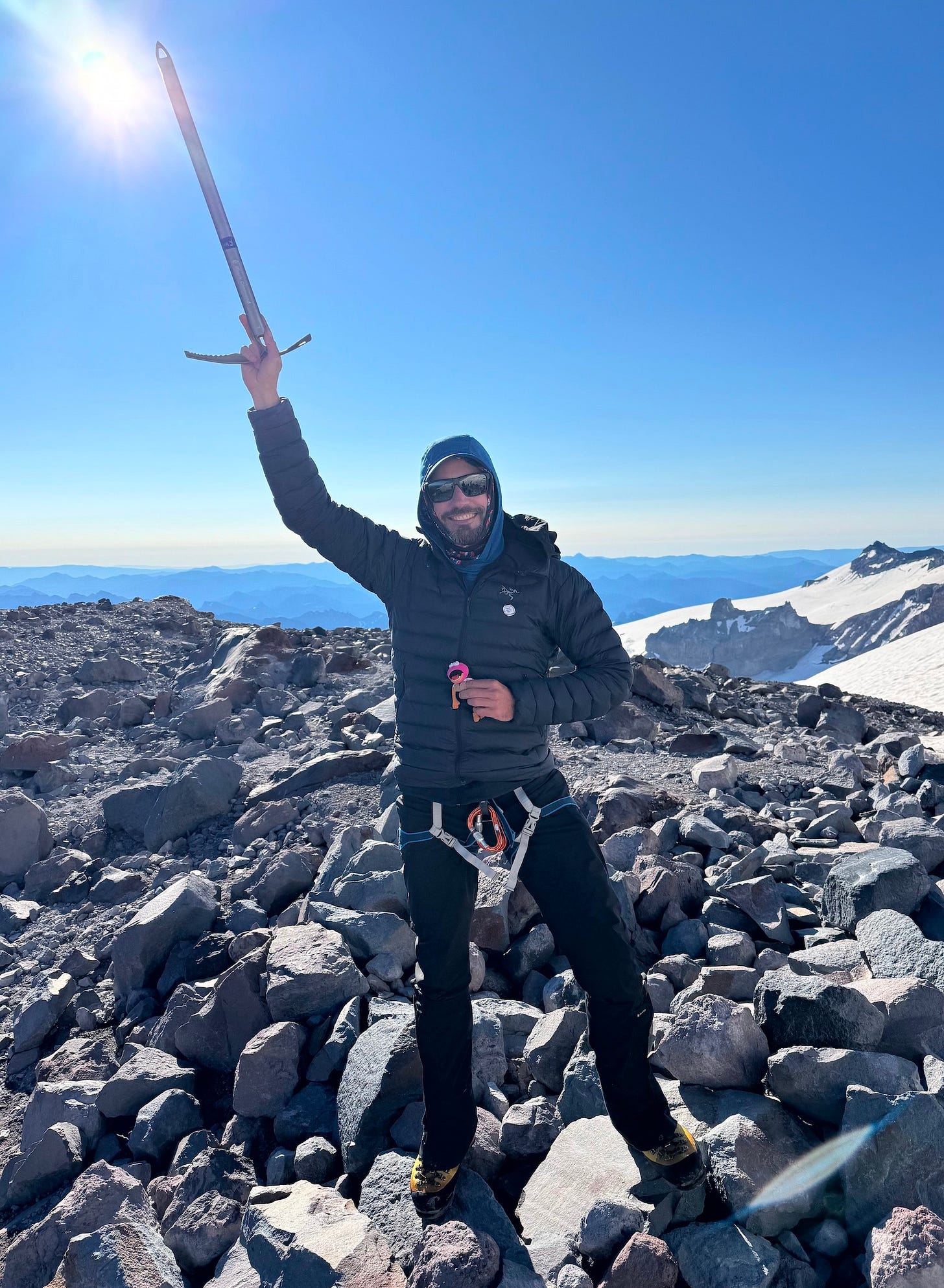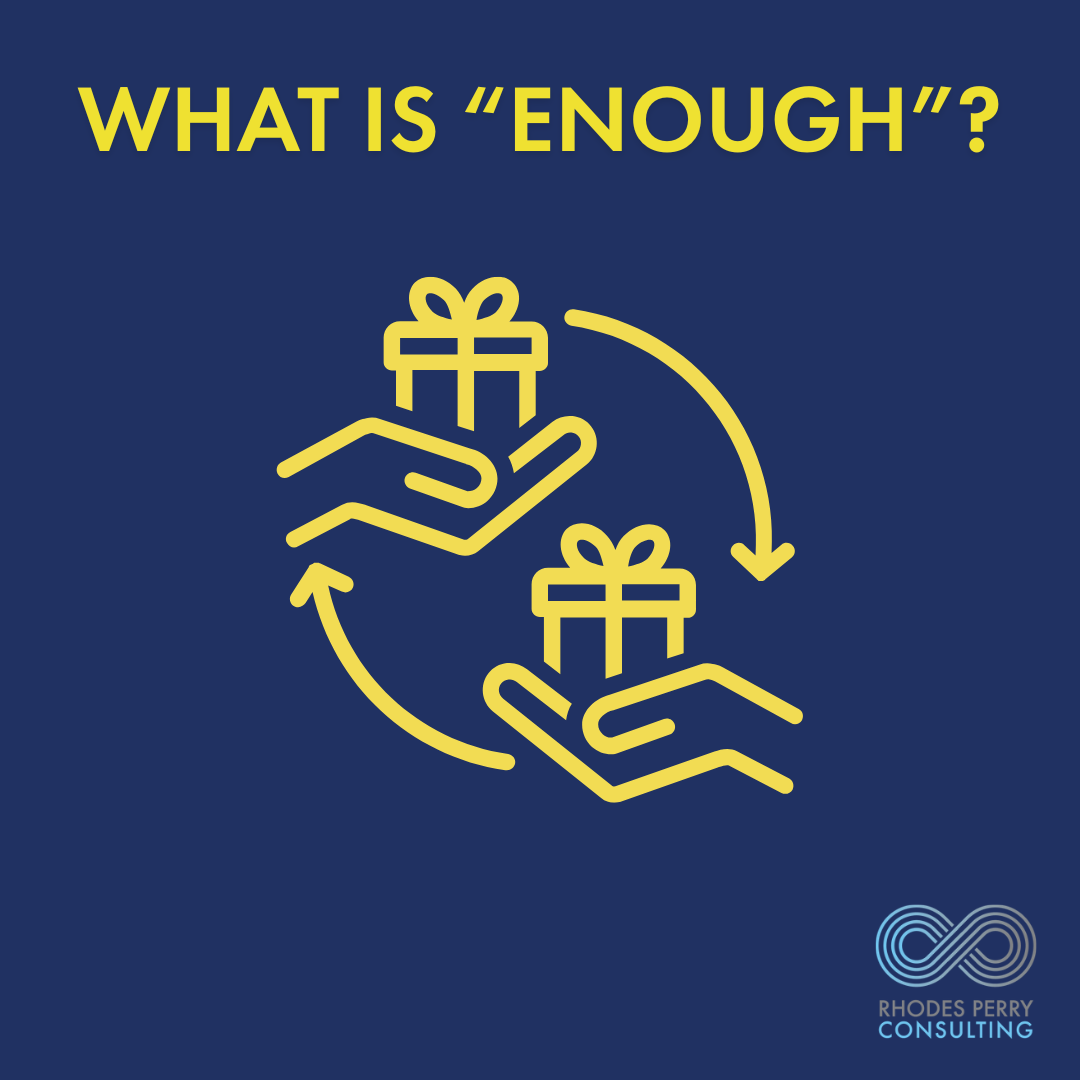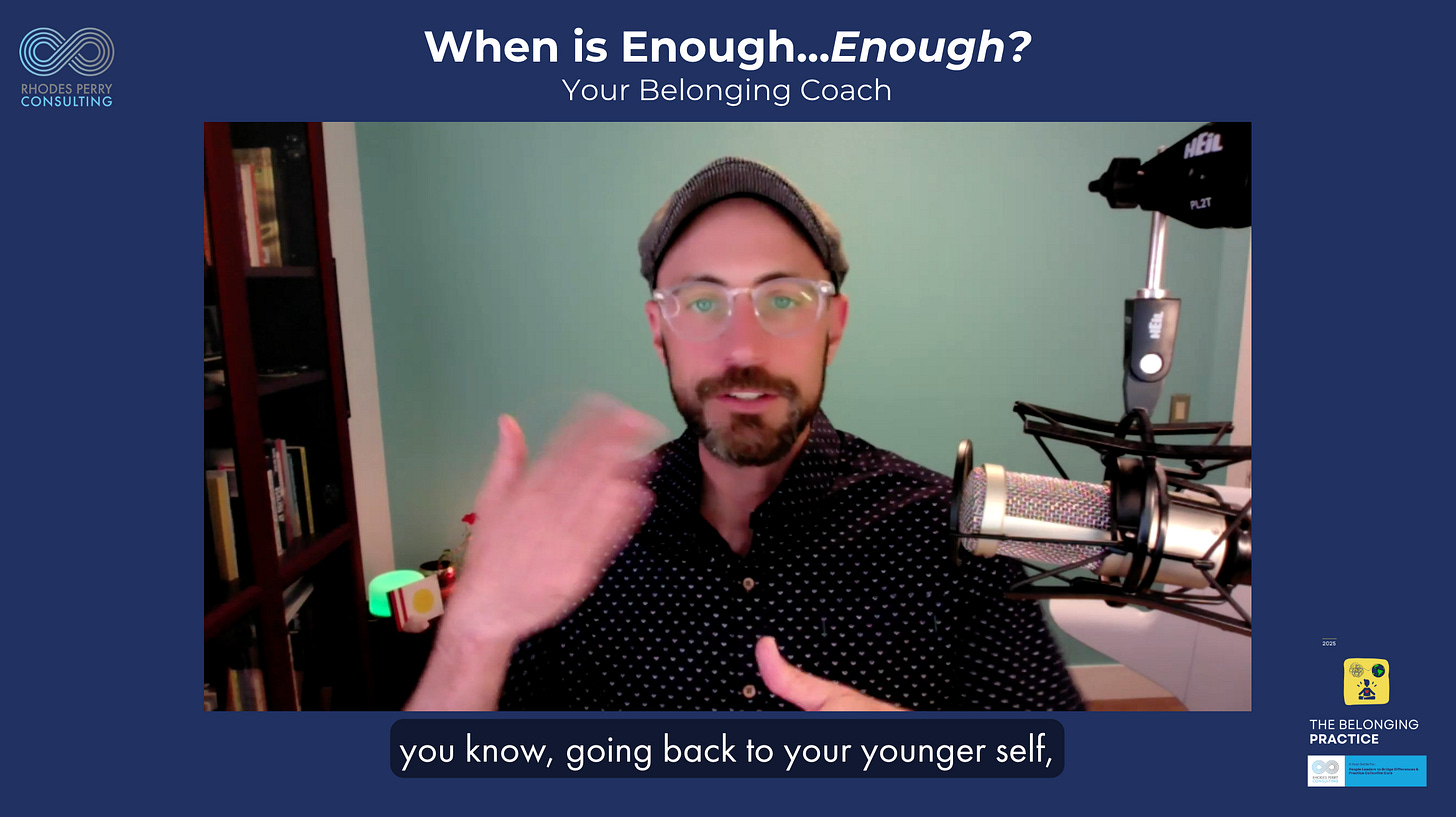When is Enough...Enough?
Clarify your definition of 'enough' through a somatic practice featured in this article. It will liberate you from scarcity thinking and inspire a mindset of fulfillment and satisfaction.
Earlier this month, I adventured to new heights, scaling Mt. Rainier’s Emmons Glacier. Those closest to me often asked why. What’s the point of all that suffering?
When I responded, I overemphasized that these kinds of adventures make me feel most alive! Attempting such a feat reveals what my mind and body are truly capable of.
The mountain offered plenty of lessons during this 4-day expedition. One of the most important lessons was to feel into what “enough” truly means to me.
On our Summit Day, the winds were whipping at 45 mph, with gusts growing ever-stronger. As we rose to new heights, we braced against the howling wind.
At 13,000 feet, our guides made the difficult decision to end our summit bid. Our bodies knew before our brains could process this reality - we had had enough.
It was in that moment that I began to question:
When is enough, really enough?
If you’re like me and live in the United States, you swim in a culture with unlimited wants on a planet with finite resources.
This is the definition of a culture suffering from a scarcity mindset, where people feel they never have, or are, “enough.”
Defining what “enough” actually is can at times feel elusive, which may explain why we are bombarded with messages to do more, be more, give more, and have more.
Feeding Hungry Ghosts
This relentless pursuit can exacerbate the scarcity mindset. The Buddhist metaphor of the “hungry ghost” in the Tibetan Wheel of Life illustrates the scarcity mindset.
The hungry ghost has a tiny mouth, narrow throat, and a swollen belly, representing its inability to be fulfilled.
We see the scarcity mindset most acutely embodied by the world’s multi-billionaire class —a small group of people frantically racing to amass wealth.
The purpose of this accumulation is driven by a deep-seated, often unconscious, fear that there will never be enough.
This scarcity mindset significantly harms humanity as well as all other living beings, including our planet.
It fuels toxic competition instead of collaborative endeavors, promotes inequality, and depletes Earth of precious resources at an alarming rate.
But what if "enough" isn't a fixed point, but rather a dynamic, embodied state we can learn to sense and honor?
Imagine the state of “enough” existing on a spectrum, guiding both how much we give on one end, and how much we take on the other.
Upend the Scarcity Mindset Trap
Positive psychology research consistently reveals the harms of scarcity thinking. Left unchecked, hanging onto the false belief that there isn’t enough to go around leads to chronic stress, poor decision-making, and burnout.
If you’re caught in the scarcity mindset trap, you may find yourself overriding your body’s signals.
In this state, you likely push past your limits in a desperate attempt to do and be “more,” yet achieving a state of fulfillment remains elusive.
When you notice yourself in this state, you have a choice – become a hungry ghost, or use your body as a compass to scan for different perspectives and choices.
Your body will let you know when you have taken too much, given too little, or reached a point of genuine fulfillment.
Tuning into your body’s innate intelligence is the key to determining your definition of “enough.”
The “Enough” Spectrum - Giving
Imagine the left side of the “enough” spectrum indicating your satisfactory level of giving enough.
This represents your ability to give sustainability from a place of being fully resourced. It’s not about giving less or being selfish.
Many of us fall into the trap of constantly over-extending by overworking, saying “yes” to every request, and prioritizing other people’s needs above our own.
This often stems from the need to prove our own worthiness and perfecting our people-pleasing tendencies.
True generosity means giving to others from a place of abundance, not from a depleted state.
If you find yourself giving more to others than yourself, you run the risk of experiencing burnout, resentment, and a limited ability to effectively contribute.
Learning to give “enough” means acknowledging your body’s physical and emotional limits, setting boundaries, and trusting those around you.
These moves empower you to strategically and sustainably contribute when your energy is most needed.
The “Enough” Spectrum - Taking
Picture the right side of the “enough” spectrum illustrating your satisfactory level of taking enough.
This requires recognizing and honoring your needs for rest, nourishment, learning, & support. For some, taking what’s needed may activate feelings of guilt or selfishness.
Yet, just as a plant needs sunlight and water to survive, we humans also require physical, emotional, and intellectual support to live happy and healthy lives.
When we fail to fulfill our needs, we operate from a deficit, leading to feelings of chronic fatigue, resentment, and a limited ability to be creative and present.
Instead of feeling guilty, explore what it means to you to “take enough.” What will it take to replenish your energy and make better decisions at work and beyond?
Your “Enough” Definition
The following video will help you discern what giving and taking “enough” feels like in your body.
You’ll have the opportunity to tune into your body’s subtle cues – pressure, temperature, sensations, etc. – and align them with your deepest values.
This activity is about consciously choosing to operate from a place of fulfillment. Why does this matter?
Because your definition of "enough" allows you to embrace the abundance mindset or the belief that you have enough.
This practice isn’t about settling but about discerning true abundance from the hungry ghosts who crave endless accumulation.
It's about shifting from a scarcity mindset to one of sufficiency, where we recognize the richness that already exists in our lives.
When you feel “enough,” your responsibility becomes clear: to give and receive generously to everyone and everything you encounter who struggles with “enough.”
If you have enough food, share it. If you have enough knowledge, teach it. If you have sufficient resources, consider supporting others.
This generosity isn't born out of guilt or obligation but rather from a genuine overflow of abundance.
It's the natural consequence of moving beyond the fear of lacking, and into the innate wisdom of knowing at the cellular level that you are enough, and that together, our global community has enough.
Your Belonging Coach
Are you ready to access your body’s wisdom to truly recognize what “enough” means to you?
Move beyond endless accumulation and cultivate a more profound sense of well-being and confidence for yourself and those you lead.
Explore somatic coaching to unlock your body’s deep wisdom, serving as a compass that guides you to a more fulfilling life, aligned with who you know you must become to be a source of strength and courage in this world.
By making time to practice somatics intentionally, your awareness grows, allowing you to break unconscious patterns that will transform the way you lead and live.
These are not quick fixes, but rather ongoing practices. They require commitment, repetition, and support.
The following resources can offer that kind of support:
The Belonging Practice. Practice embodied exercises and develop the leadership skills necessary to upend workplace exclusion and build team safety & trust using this guide.
Somatic Group Coaching. Register to receive updates about our fall somatic group coaching programs and receive invites to our weekly complimentary Belonging Practice sessions.
Your Belonging Coach. If you’d like 1:1 support, I’m offering a special 10-session somatic coaching package this spring. Learn more here.
Thank you for growing our Belonging Movement!




